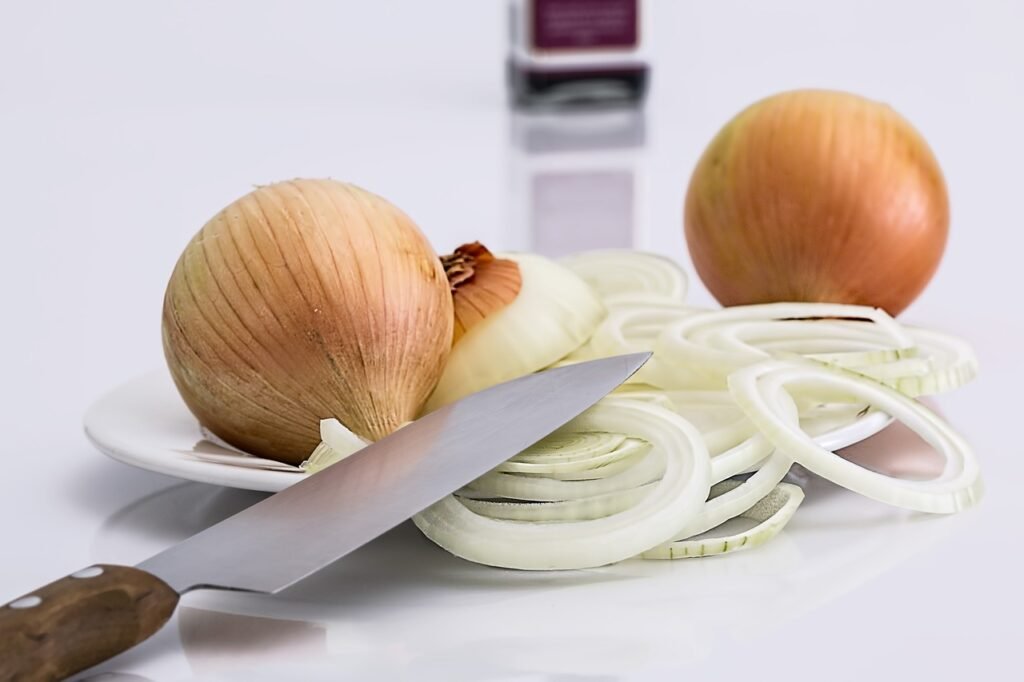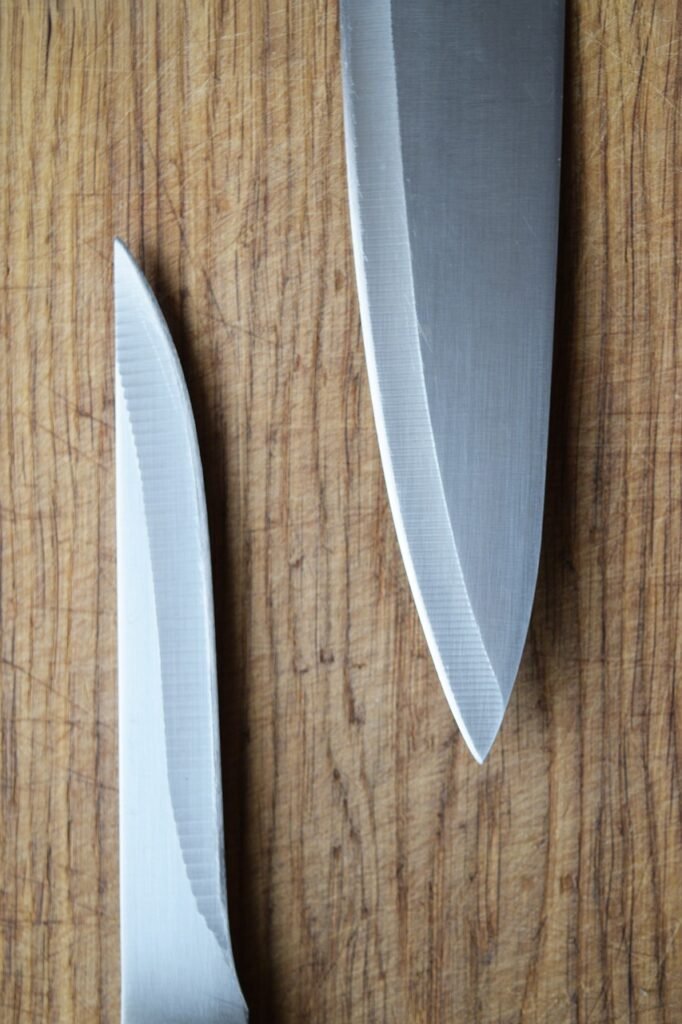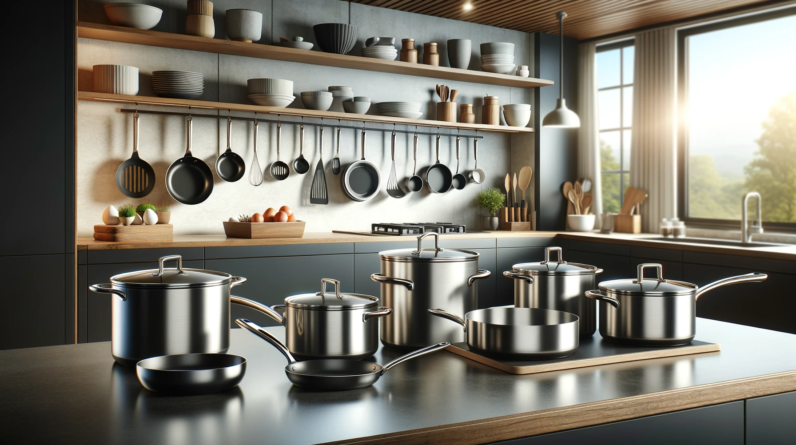
Disclaimer: This post may contain affiliate links. As an Amazon Associate, we earn from qualifying purchases.
In the bustling world of cooking, where precision and efficiency are key, finding the perfect cutting tool is essential. But with an overwhelming array of options available, how do you determine which one reigns supreme? Look no further, because in this article, we will reveal the cooks most versatile cutting tool.
Whether you are a seasoned chef or a kitchen novice, this essential utensil will revolutionize your culinary experience and make meal preparation a breeze. So get ready to sharpen your knives and discover the must-have tool that will elevate your cooking to new heights.
Choosing the Right Cutting Tool
When it comes to cooking, having the right cutting tools is essential. The right tool can make a world of difference in your preparation process, saving you time and effort. But with so many options available on the market, how do you choose the right cutting tool for your needs?
In this post, we will explore the different types of cutting tools and provide you with some considerations to help you make an informed decision. We will also highlight versatility as a key factor to consider when selecting a cutting tool.
Understanding the Different Types of Cutting Tools
Before we dive into the specifics of each cutting tool, it’s important to have a basic understanding of the different types available. The most common types of cutting tools include chef’s knives, Santoku knives, paring knives, utility knives, cleavers, bread knives, boning knives, fillet knives, and kitchen shears.

Considerations for Selecting a Cutting Tool
When selecting a cutting tool, it’s crucial to consider several factors. One important consideration is the purpose for which you will be using the tool. Are you primarily chopping vegetables, slicing meat, or filleting fish? Understanding your specific needs will help you choose a cutting tool that is tailored to your culinary style. Additionally, you should consider the size and weight of the tool, as well as the handle grip, as these factors can significantly impact your comfort and control while using the tool.
Versatility as a Key Factor
While each cutting tool serves its unique purpose, versatility is a key factor to consider. A versatile cutting tool allows you to perform a variety of tasks, eliminating the need for multiple specialized knives. Versatility not only simplifies your culinary process but also saves you precious storage space in your kitchen. With this in mind, let’s explore some of the most common cutting tools and their versatility.

The Chef’s Knife
The chef’s knife is often regarded as the most versatile cutting tool in a cook’s arsenal. With its wide blade and sturdy construction, the chef’s knife excels in a wide range of kitchen tasks. Whether you are chopping, slicing, dicing, or mincing, the chef’s knife can handle it all with ease. Its curved blade allows for a rocking motion, making it a favorite amongst professional chefs and home cooks alike.
There are various types of chef’s knives available, each with its unique features. The French chef’s knife, also known as the chef’s knife, is a popular choice. Its broad, triangular blade allows for precise and controlled chopping.
The Japanese chef’s knife, on the other hand, typically features a thinner and harder blade, perfect for delicate tasks such as slicing fish or vegetables.
The benefits of a chef’s knife are numerous. Its versatility allows you to tackle a wide array of ingredients with minimal effort. Whether you are preparing a simple salad or a complex gourmet dish, the chef’s knife will be your go-to tool in the kitchen.
The Santoku Knife
The Santoku knife, originating from Japan, has gained popularity in recent years due to its unique features. Although it shares similarities with the chef’s knife, the Santoku knife has its distinct characteristics that set it apart.
The Santoku knife is shorter and lighter than a traditional chef’s knife, typically measuring around 5 to 7 inches in length. It features a wide blade with a flat edge and a sheepsfoot tip, providing excellent control and precision. Unlike the chef’s knife, the Santoku knife does not have a curved blade, making it more suitable for straight up-and-down chopping motions.
While the chef’s knife excels in rocking and slicing motions, the Santoku knife shines in chopping and dicing tasks. Its versatility lies in its ability to handle both delicate tasks and more robust ingredients, making it a great all-purpose cutting tool.

The Paring Knife
A paring knife is a small, versatile cutting tool that is a must-have in any kitchen. Its compact size, typically ranging from 2 to 4 inches, allows for intricate and detailed work. The paring knife features a pointed tip and a narrow, straight blade, making it ideal for peeling, trimming, and slicing small fruits and vegetables.
When comparing the paring knife to the chef’s knife, its niche uses become apparent. While the chef’s knife is designed for larger tasks, the paring knife shines when it comes to precision and finesse.
Whether you are coring an apple, deveining shrimp, or creating intricate garnishes, the paring knife will be your trusted companion.
The Utility Knife
The utility knife is a smaller version of the chef’s knife, offering a balance between versatility and maneuverability. With a blade typically ranging from 4 to 7 inches, the utility knife is perfect for tasks that require more control and precision than what a larger knife can offer.
When comparing the utility knife to the chef’s knife, its limitations become apparent. While it may not excel in larger chopping tasks, the utility knife is perfect for slicing sandwiches, cutting small fruits and vegetables, and performing more delicate tasks such as deveining shrimp or trimming fat from meat.
Its smaller size also makes it a great tool for those with smaller hands or for individuals who prefer a lighter knife.
The Cleaver
The cleaver is a unique cutting tool that serves a specific purpose in the kitchen. Known for its impressive size and heft, the cleaver’s defining feature is its broad, rectangular blade. This heavy-duty tool is designed for heavy chopping and cutting tasks, particularly when it comes to bone-in meat.
Compared to the chef’s knife, the cleaver’s specialized uses become apparent.
While the chef’s knife can handle various ingredients, the cleaver shines when it comes to tasks such as breaking down poultry, splitting larger cuts of meat, and crushing garlic cloves. Its weight and size allow for excellent leverage and force, making it a go-to tool for butchers and those who frequently work with bone-in cuts.
The Bread Knife
As its name suggests, the bread knife is designed specifically for slicing bread. With its long, serrated blade, the bread knife can easily glide through crusty loaves, without crushing or tearing the delicate crumb inside. Its serrated edge allows for a sawing motion, maintaining a clean and precise cut.
While the chef’s knife can handle a variety of tasks, its straight-edged blade may struggle when it comes to slicing bread. The serrated edge of the bread knife ensures a smooth and even cut, without squishing or compressing the loaf. Additionally, the bread knife can also be used for slicing delicate cakes, tomatoes, and other soft fruits or vegetables that have a tendency to get crushed by a straight-edge blade.
The Boning Knife
The boning knife is a specialized cutting tool designed specifically for deboning meat and poultry. With its thin, flexible blade, the boning knife allows for precise and controlled maneuvering around bones and joints. Its sharp, pointed tip provides excellent accuracy and precision.
When comparing the boning knife to the chef’s knife, its specific applications become apparent. While the chef’s knife can handle general meat prep and butchering, the boning knife is essential when it comes to removing bones from cuts of meat or poultry. Whether you are filleting a fish, removing the bones from a chicken breast, or preparing a rack of ribs, the boning knife is your go-to tool for delicate and intricate work.
The Fillet Knife
The fillet knife is another specialized cutting tool designed for filleting fish. With its long, slender blade and flexible construction, the fillet knife allows for precise and clean filleting, minimizing waste. Its sharp, pointed tip helps guide the blade along the fish’s bones, ensuring a smooth and even cut.
While the chef’s knife can handle basic fish preparation, the fillet knife excels in more delicate tasks. Whether you are removing the skin from a filet, removing pin bones, or creating precise cuts for sushi or sashimi, the fillet knife is specifically designed to make fish preparation a breeze.
The Kitchen Shears
 While not technically a knife, kitchen shears are an essential tool in any cook’s arsenal. With their sturdy construction and sharp blades, kitchen shears can handle a variety of tasks that traditional knives may struggle with. They are perfect for cutting through poultry, snipping herbs, opening packages, and even cracking nuts.
While not technically a knife, kitchen shears are an essential tool in any cook’s arsenal. With their sturdy construction and sharp blades, kitchen shears can handle a variety of tasks that traditional knives may struggle with. They are perfect for cutting through poultry, snipping herbs, opening packages, and even cracking nuts.
Compared to knives, kitchen shears offer additional capabilities due to their design. Their two-blade construction allows for effortless cutting and trimming, while the handle grip provides excellent control and maneuverability. Kitchen shears are particularly useful for those who prefer to cut their ingredients directly into the cooking pot or for those who require the extra dexterity that scissors offer.
So choosing the right cutting tool for your culinary needs is crucial. While the chef’s knife may be the most versatile option, each cutting tool serves its unique purpose. Consider your specific needs and the tasks you frequently perform in the kitchen to make an informed decision. And remember, a well-equipped kitchen is a chef’s best friend. Happy cooking!





